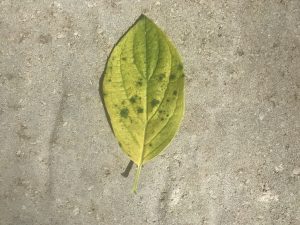Some Known Factual Statements About Hydrangea Leaves Turning Yellow
Table of ContentsHow Hydrangea Leaves Turning Yellow can Save You Time, Stress, and Money.7 Simple Techniques For Hydrangea Leaves Turning YellowLittle Known Questions About Hydrangea Leaves Turning Yellow.Hydrangea Leaves Turning Yellow for Dummies
One possibility is that the plant is not obtaining sufficient sunlight. During the wintertime months, the days are much shorter, and the sunlight is not as extreme, so make sure to put your Hydrangea in an area where it will get at least six hours of sunlight every day. One more factor for Hydrangea yellow leaves in winter season could be also much water.Ultimately, the leaves could be turning yellow as a result of temperature level anxiety. Hydrangeas like cooler temperatures, so if the plant remains in a place that obtains also warm or too cool, the fallen leaves will certainly transform yellow. If you believe temperature level stress may be the problem, try relocating your Hydrangea to a various location or safeguarding it from the elements with a burlap wrap
New development will be observed in very early springtime, when you'll discover environment-friendly vegetation growing from stems that might have shown up dead. Nevertheless, if your fallen leaves are transforming brown in spring or summer season, there are likely various other factors at play. The precise factors depend on the selection and their expanding problems, yet generally, brownish hydrangea leaves signify dehydration and wilting in the warmth.
In the springtime when the mercury stays relatively low, they'll do great. When points warm up over the summer however, time spent in the very early afternoon rays can cause untold damage.: Grow your hydrangeas in a place where they'll get sunlight in the mornings or nights, however not throughout the peak hours.
Some Ideas on Hydrangea Leaves Turning Yellow You Need To Know
Wilting is triggered by lack of moisture, suggesting there are a couple of good tricks to use to avoid this from happening. Give your hydrangeas a healthy glug of water every few days when the temperature levels are climbing high, and treat the dirt to far better retain dampness. Hydrangea Leaves Turning Yellow. After watering, a dab of mulch around the base of each plant must assist with this by keeping wetness in the soil
This interrupts fungis spores from clearing up. "The Botrytis fungus flourishes in cool and wet problems, so stay clear of bathing the entire plant when sprinkling and just water at the roots," shares Roy Nicol, a Master Green thumb. If you have actually missed out on the opportunity for avoidance and are dealing with an infection you should eliminate all dead or significantly contaminated fallen leaves from the plant and damage them to avoid further spread.
As a basic general rule, we advise eliminating fallen leaves when they are 50% brown or greater. While browning triggered by any factor can not be turned around, read here taking the corrective action described above will motivate the plant to grow brand-new fallen leaves so the damaged fallen leaves either diminish naturally or can be eliminated by the gardener.
Hydrangeas need to be watered just when the leading couple of inches of soil are completely dry, and need to be given a detailed saturating each time. Underwatered hydrangeas are most likely to have yellow, wilting, and drooping leaves.
Facts About Hydrangea Leaves Turning Yellow Revealed
The way you fix hydrangea leaves transforming yellow depends on the vital concern triggering the yellow fallen leaves. This can be challenging to determine, once you do you will have the ability to change your plant treatment appropriately to look after the issue. As mentioned in the past, an usual concern with hydrangeas is vitamins and mineral deficiencies.

Additionally, you can acquire and install basic watering worlds. Watering worlds hold water in them and slowly release this water into the dirt as the ground comes to be dry. Just fill up the globe with water, stick the spout right into the dirt within the origin area near the base of the plant, and leave it in position till all the water is gone.
About Hydrangea Leaves Turning Yellow
To prevent spreading fungal conditions, make certain to thouroughly tidy and decontaminate any pruning tools before and after usage (Hydrangea Leaves Turning Yellow). You can try to purge the origins with water to get rid of excess fertlizer.
Your hydrangea plant favors well-drained, moist soil. If the pot has bad water drainage, or your dirt is flooded, the fallen leaves will certainly start to transform yellow. Overwatering makes the soil soaked. Flooded and soggy dirt can lead to stunted growth, leaf discoloration, and, worst of all, rot fungal illness. Despite the fact that over-watering can be harmful, under-watering is not an alternative either.
If you do not water your hydrangea plant for more than a week, the leaves will start turning yellow. Fungal diseases that attack the plants often tend to show check my reference indicators on the origins and the leaves of the plant.
Origin rot occurs when microorganisms take up the root cells as hosts and quit the cell from operating. Otherwise cared for, this disease can at some point cause the plant passing away. Leaf spot is one more fungal disease that can target hydrangea. It results in the fallen leaves turning yellow and the appearance of brown and purple places on the leaves.